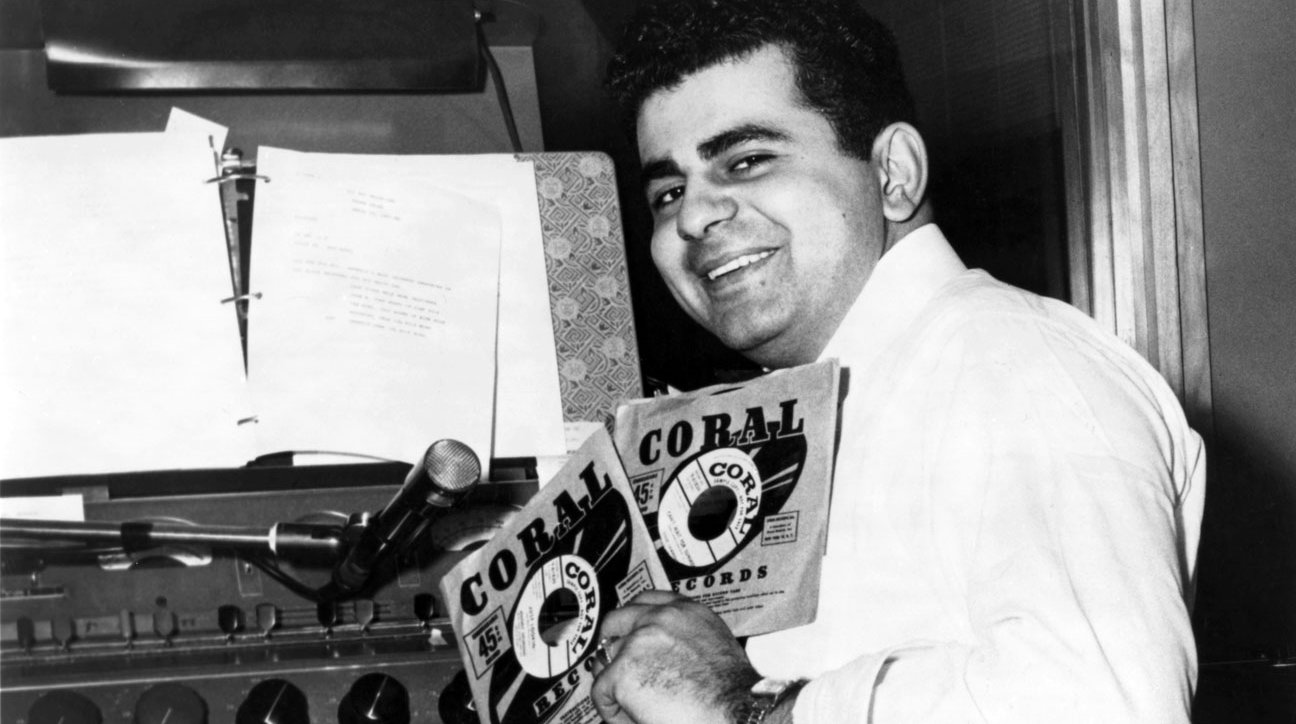
Despite only being in existence for less than eight years, Oakland’s KEWB, which evolved from the pioneering Oakland Tribune station KLX and later became KNEW, made a lasting impact on Bay Area listeners through its innovative Top 40 programming, sponsorship of local events, and a parade of unbeatable talent.

KLX becomes KEWB on June 8, 1959. [ LISTEN ] (13:52)
Station KLX after four decades of ownership by the Tribune, launches Top 40 KEWB. After a message by president Robert M. Purcell, the station’s raucous new star, Gary Owens, hits the air.

Throw in the innovative programming skills of Chuck Blore, and the recipe for success was complete.
KEWB came into being during the Summer of 1959 after Crowell-Collier Publishing purchased KLX (910 kilocycles on the AM dial) for $750,000 from its original owners, the 3Tribune Publishing Company of Oakland, which had founded the station thirty-seven years earlier.
The Oakland Tribune, owned by the Knowland family since 1915, was one of countless newspapers across the United States that saw the potential benefits of radio in the dawning days of commercial broadcasting, and debuted 250-watt KLX on May 3, 1922, from the landmark Tribune Tower at Thirteenth and Franklin streets.
Through its familial relationship with the Tribune, KLX became a popular and influential voice on the Bay Area airwaves, increasing its transmitter power incrementally over the years to 5,000 watts.
The station moved out of the Tribune Tower, where it had occupied the 19th, 20th and 21st floors at the top of the venerable edifice, to new studios and offices in the Bermuda Building on Franklin Street in Oakland in the latter part of 1956.
CASEY AT THE MIKE
October 2, 1962[ LISTEN ] (35:16)
Twenty-nine year old Casey Kasem presides over his evening program on “Easy To Remember” KEWB.
Casey’s references to detail, such as band member’s names, were later an essential element in his “American Top 40” broadcasts. A native of Detroit, Casey joined KEWB via KYA.However, by the 1950s, Collier’s had begun to fade; it ceased publication on December 16, 1956, as its owner ventured into the world of broadcasting. Eventually, Crowell-Collier would own three historic Top 40 stations: KFWB in Los Angeles, KDWB in Minneapolis and KEWB, Oakland/San Francisco, all with Chuck Blore's programming imprint.

Crowell-Collier sold KEWB to Metromedia Radio in April 1966 for nearly 2.5 million dollars. The station became KNEW in September 1965 under its new owners.

Ron Lyons on KEWB, July 29, 1963 [ LISTEN ] (22:06)
Bobby Dale, August 4, 1963 (13:47) [ LISTEN ] The Real Don Steele, August 16, 1964 (22:06) [ LISTEN ] and a couple of years later here is Johnny G, January 19, 1966 [ LISTEN ] (44:26)
Wonderful stuff here, including classic commercials with Ann-Margret, Graham TV, Salem Cigarettes, news, sports, weather, DJ banter, and an unscoped music format.
Bobby Dale, August 4, 1963 (13:47) [ LISTEN ] The Real Don Steele, August 16, 1964 (22:06) [ LISTEN ] and a couple of years later here is Johnny G, January 19, 1966 [ LISTEN ] (44:26)
WHO WORKED AT KEWB? Here is the list: K.O. Beachin, Frank Bell, Scott Bridges, Chris Borden, Don Bowman, Pete Bunny, Bill Enis, Mark Foster, Buck Herring, Ken Knox, Don MacKinnon, Bob Nunn, Ron Reynolds, Ted Randal, Michael Jackson, Bobby Dale, Johnny G, Casey Kasem, Ron Lyons, Don MacKinnon, Robert W. Morgan, Art Nelson, Gary Owens, Perry Roberts, Jim Tharp, Bill Wood, and Don Steele.
Some materials found on this page were originally published by the following: ARSA Radio Surveys, Bay Area Radio Museum

























